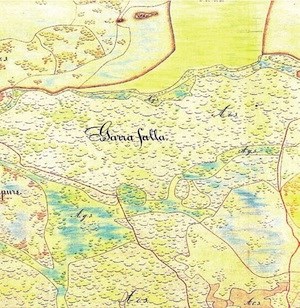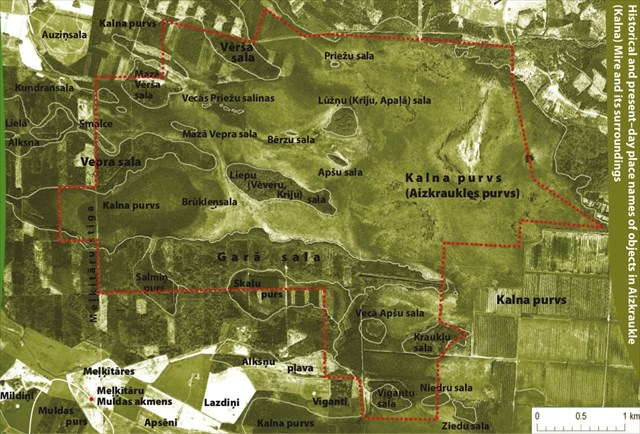 Formation of Aizkraukle Mire started in the early Boreal period of the Holocene, approximately 8000–9000 years ago. Due to the higher groundwater level, small and shallow lakes formed in the lower areas of the wide lowland. When the climate became warmer and more humid, it favoured lake terrestrialisation and peat formation from decaying plant remains. Mire studies reveal that the maximum peat thickness in the mire reaches 7.9m. The most intensive peat formation started during the Subatlantic period approximately 2800 years ago and continues up to this day.
Formation of Aizkraukle Mire started in the early Boreal period of the Holocene, approximately 8000–9000 years ago. Due to the higher groundwater level, small and shallow lakes formed in the lower areas of the wide lowland. When the climate became warmer and more humid, it favoured lake terrestrialisation and peat formation from decaying plant remains. Mire studies reveal that the maximum peat thickness in the mire reaches 7.9m. The most intensive peat formation started during the Subatlantic period approximately 2800 years ago and continues up to this day.
Earliest available written facts about the Aizkraukle Mire and the surrounding forests can be found in Swedish maps of the 17th century. Wooded mineral-soil islands can be seen also on maps of the previous centuries and they all have historical names - Liepu [Lime- tree] Island, Brūkleņu [Bilberry] Island, Vērša [Ox] Island etc.
There are two types of bog in Aizkraukle mire:
- Raised bog habitats are most widespread. Several Sphagnum species characteristic of raised bogs and other bog species dominate there: Hare’s-tail Cotton-grass Eriophorum vaginatum, Bog-rosemary Andromeda polifolia, Cranberry Oxycoccus palustre. Hummocks with small dwarf shrubs and cotton-grass interchange with wet hollows, where most common is Rannoch-rush Scheuchzeria palustris and Great Sundew Drosera anglica. The raised bog with ridge-pool complex forms impressive landscape where many bog pools interchange with ridges.
- Transition mire covers a considerably smaller area. It has developed mostly around the mineral-soil islands and covers larger area in the north-eastern part of the mire. Features of both mire types can be found there. Sphagnum moss dominate in the bryophyte layer of the transition mire, while also different sedges – Bottle-sedge Carex rostrata, Slender-sedge C. lasiocarpa and Bog-sedge C. limosa – occur in the herb layer.
The cache hiding place is inside the "Aizkraukle mire and forests" nature reserve. Be careful not to damage the fragile mire environment. Please do not smoke or use open fire in any way while in the mire.
To get to the cache hiding place You will have to walk through wet forest and bog. Except in winter, using rubber boots and insect repellant is strongly advised. Though not strictly necessary, a walking stick could be useful as well.
